Chapter 2
![BCM E2 PM [Project Management] Banner](https://blog.bcm-institute.org/hs-fs/hubfs/BCM%20E2%20Blog%20Banner/BCM%20E2%20PM%20%5BProject%20Management%5D%20Banner.png?width=750&height=150&name=BCM%20E2%20PM%20%5BProject%20Management%5D%20Banner.png)
Project Management Phase for Business Continuity Management Planning Methodology for Bandtree
The project management phase in the Business Continuity Management (BCM) planning methodology is essential for ensuring that all activities are strategically organised, monitored, and delivered on time.
For Bandtree, a government-linked company (GLC) in Brunei Darussalam, the successful implementation of a robust BCM system involves a clear and structured approach to project management.
This phase serves as the backbone of the entire BCM program, laying the foundation for all subsequent activities, from risk assessment to the formulation of business continuity strategies.
Purpose of Chapter
The "Purpose of Chapter" section in the eBook Business Continuity Management Planning Methodology for Bandtree serves to establish the foundational goals and significance of the chapter within the broader context of the eBook.
In this section, the reader is introduced to the core objectives and the specific role of each chapter in Bandtree's journey toward implementing an effective Business Continuity Management (BCM) program.
This chapter provides clarity on how the methodologies and practices described will contribute to Bandtree’s resilience strategy, focusing on minimizing operational disruptions and protecting the company’s infrastructure.
By outlining the key purpose of the chapter, this section also helps Bandtree’s management and staff understand how the project management phase ties into their overarching BCM goals.
This ensures that everyone involved is aligned with the project’s strategic direction and is equipped with the knowledge necessary to contribute effectively to the implementation of the BCM plan.
By incorporating ISO 22301 standards, Bandtree can ensure that its BCM planning not only mitigates risks but also aligns with international best practices.
This chapter will explore the key elements of the project management phase, tailored specifically to Bandtree’s operational needs, its corporate property management sector, and the broader goals of enhancing organizational resilience.
Key Elements of the Project Management Phase
1. Project Scope and Objectives
In the context of Bandtree, the first step in the project management phase involves defining the scope of the BCM project.
For example, Bandtree may choose to implement BCM across its property management portfolio, ensuring that critical business functions, such as facility maintenance, tenant relations, and emergency response, are covered.
The project objectives should be clearly defined to align with Bandtree’s organisational goals, such as minimising downtime during disruptions and safeguarding infrastructure assets.
Example: Bandtree’s scope could include ensuring that critical facilities, such as its headquarters in Jerudong and major managed buildings, have operational continuity plans for both short-term and long-term disruptions.
2. Stakeholder Engagement and Communication
Effective communication is crucial for the success of any BCM initiative.
At Bandtree, this would involve identifying key stakeholders across various departments, including senior management, property managers, and technical staff.
A communication plan should be developed to ensure that all stakeholders are informed about project milestones, risks, and responsibilities.
Example: Bandtree's project management team might organize workshops for property managers to raise awareness about potential threats, such as natural disasters or cyberattacks, and how BCM practices can mitigate these risks.
3. Risk Analysis and Review (RAR) and Business Impact Analysis (BIA)
This phase involves conducting a thorough risk assessment to identify potential threats to Bandtree's operations. A Business Impact Analysis (BIA) would be performed to determine which business functions are most critical and to assess the potential impact of disruptions.
For Bandtree, this may involve assessing the risks associated with property damage, loss of key tenants, or disruption of critical services, such as utilities.
Example: A BIA might reveal that disruption in the maintenance of air conditioning systems in key buildings could lead to significant financial losses due to tenant dissatisfaction and business downtime.
4. Resource Planning
The next step involves resource planning to ensure that Bandtree has the necessary personnel, technology, and budget to implement the BCM program.
Bandtree’s project management team would need to assess existing resources, identify gaps, and allocate funds accordingly.
This may involve investing in IT systems for risk monitoring, conducting staff training, or hiring consultants to develop a BCM strategy.
Example: Bandtree may invest in a property management software that integrates disaster recovery features, enabling quick access to critical tenant information in the event of an emergency.
5. Timeline and Milestone Development
Establishing a precise timeline is key to ensuring the timely completion of the BCM project. Bandtree's project management team would need to break down the overall project into smaller, manageable phases with defined milestones.
For example, the initial phase might focus on risk identification and BIA, while subsequent phases would address the development of business continuity strategies and their implementation.
Example: The timeline for Bandtree’s BCM planning might span six months, with each month dedicated to specific tasks such as conducting risk assessments, drafting continuity strategies, and testing those strategies.
How It Benefits Bandtree
The "Purpose of Chapter" section directly benefits Bandtree by:
1. Clarifying Objectives: It helps Bandtree's leadership and team members understand the critical importance of each step in the BCM planning process.
2. Setting Expectations: Defining the chapter’s purpose it sets clear expectations for how the project management phase will contribute to the overall success of the BCM program.
3. Aligning the Team: It provides a reference point that aligns all stakeholders, ensuring that everyone is working towards common goals, making it easier to execute each phase of the BCM plan efficiently.
This section, therefore, acts as a roadmap for the entire project, ensuring that Bandtree is prepared to face disruptions with a structured and well-managed approach to continuity.
It ensures that Bandtree is positioned to integrate resilience into its operations and long-term strategy, protecting both its assets and its reputation.
Summing Up ...
The project management phase of BCM planning is crucial for the successful implementation of business continuity measures at Bandtree.
By adhering to ISO 22301 guidelines, Bandtree ensures a systematic approach to resilience, focusing on the identification and mitigation of risks, resource optimization, and stakeholder engagement.
This phase provides the structure and discipline necessary to integrate BCM practices into Bandtree’s corporate culture and operations, enabling the company to maintain business continuity even in the face of unforeseen disruptions.
By systematically managing the BCM project, Bandtree can safeguard its critical infrastructure, ensure service continuity for its tenants, and build a resilient framework that will serve its long-term goals.
This chapter demonstrates the importance of project management in the broader context of business continuity and highlights the key steps Bandtree must take to achieve resilience.
Resilience Redefined: Implementing BCM at Bandtree Sdn Bhd Brunei |
||||
| eBook 2: Implementing Business Continuity Management |
||||
| C1 | C2 | C3 | C4 | C5 |
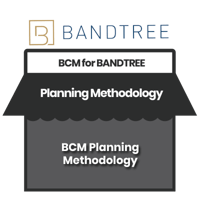 |
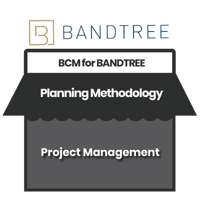 |
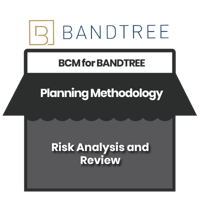 |
 |
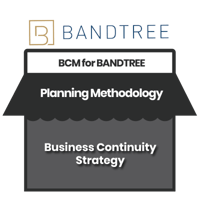 |
| C6 | C7 | C8 | C9 | C10 |
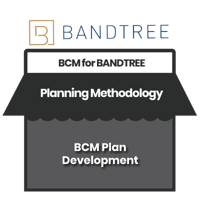 |
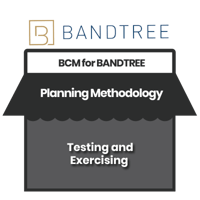 |
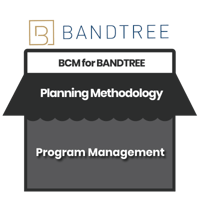 |
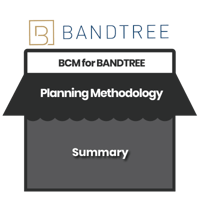 |
 |





![Register [BL-B-3]*](https://no-cache.hubspot.com/cta/default/3893111/ac6cf073-4cdd-4541-91ed-889f731d5076.png)



![FAQ [BL-B-3]](https://no-cache.hubspot.com/cta/default/3893111/b3824ba1-7aa1-4eb6-bef8-94f57121c5ae.png)
![Email to Sales Team [BCM Institute]](https://no-cache.hubspot.com/cta/default/3893111/3c53daeb-2836-4843-b0e0-645baee2ab9e.png)





